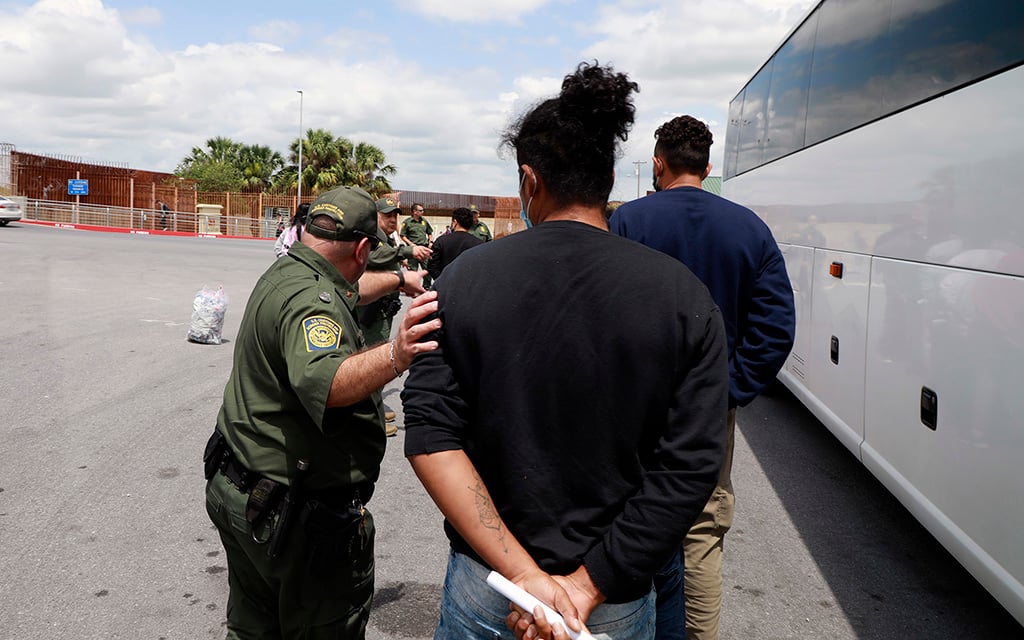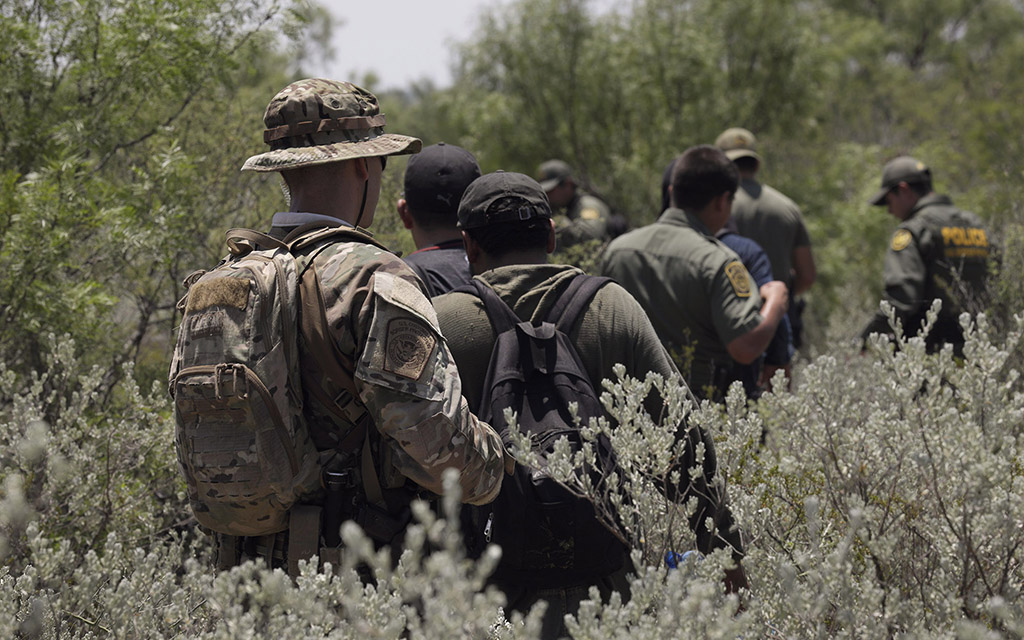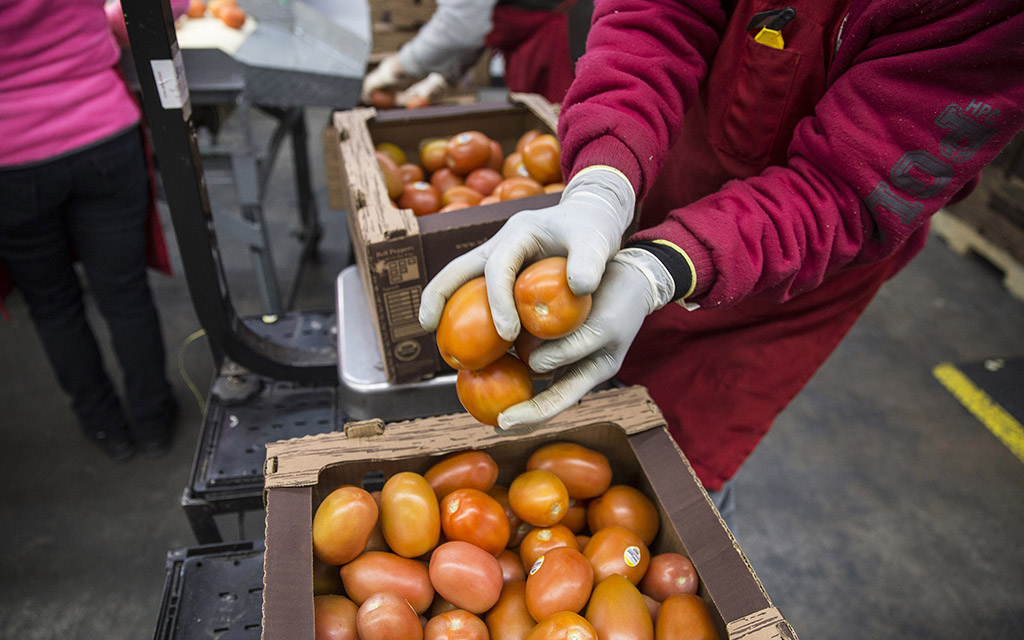
CBP personnel prepare migrants for a repatriation transfer at the Hidalgo Port of Entry in Hidalgo, Texas, in June. A month later, the Tucson sector of the border would move ahead of all other sectors for the number of migrant encounters, a position it held through November, at least. (Photo by Jaime Rodriguez Sr./Customs and Border Protection)
WASHINGTON – Migrant encounters in the Tucson sector of the border have steadily increased in recent years until the sector became busier than any other on the southern border, replacing the Rio Grande Valley as the busiest.
Migration experts say reasons behind the shift are not surprising: Migrants are looking to avoid other, more militarized border sectors.
“As the Rio Grande Valley receives more resources (and) the construction of physical barrier continues, we start to see other sectors around the border and in this case, Tucson, facing a larger number of individuals requesting asylum,” said Christian Penichet-Paul, an analyst at the National Immigration Forum.
The Rio Grande sector saw 549,077 migrant encounters in all of fiscal 2021, when border encounters in the Tucson sector totaled 191,232. But by fiscal 2023, which ended Sept. 30, encounters at the Rio Grande Valley had fallen to 338,337 while those in the Tucson sector had climbed to 373,625, according to data from Customs and Border Protection.
That trend continued in the first two months of fiscal 2024 when the Tucson sector, which includes most of Arizona’s border with Mexico, was busier by far than other sectors. CBP said Border Patrol officers reported 119,864 encounters in the Tucson sector in October and November, the latest data available, compared to 81,159 for the same period in Texas’ Del Rio sector, the second-busiest.
U.S. border researcher Ari Sawyer with Human Rights Watch agreed that the surge is likely due to migrants avoiding areas where there are heavy physical barriers and law enforcement.
The Trump administration began border wall construction in Texas, and the Biden announced in October that wall construction would resume in the Rio Grande sector. Texas Gov. Greg Abbott has also sent state troopers to the border and erected physical barriers as part of Operation Lone Star.
“Once people face a difficulty to surmount deterrence mechanisms along one part of the border … crossings begin to increase along other parts of the border,” Sawyer said.
“If you go to south Texas, you’ll see that there are signs warning people about alligators in the river. The currents are often very fast. Depending on the season, lots of people drown,” Sawyer said. “People are having their skin cut open by the razor wire, burned by the shipping containers. It’s just really hellish.”
Even though the numbers have been dropping in Texas, Penichet-Paul says the steady flow of migrants in the state remains “relatively high.”
“That augmenting border security controls in Texas could potentially be diverting some of the flow to other states,” Penichet-Paul said. “That doesn’t mean that the number at the Rio Grande Valley has dropped significantly. In fact, it’s still very stable and at a relatively high level.”
Penichet-Paul said another factor that might be drawing migrants to the Tucson sector is the fact it has less capacity in its holding facilities than in the historically busier sectors of the Rio Grande Valley or Del Rio.
“In Tucson, CBP holding facilities were not built to hold a significant number of people. So, they (migrants) are processed faster. And after they are processed, they go through … for a security check, then once all of that is completed, they may be released with an appointment to follow up with immigration officials,” he said.
“That might add to the general sense … that if you request protection at the Tucson sector, you might be more likely to be released at a quicker pace,” Penichet-Paul said.
That has left nongovernmental organizations like the Casa Alitas shelter in Tucson grappling to provide enough services for the influx of migrants. Director Diego Piña Lopez said the shelter has been able to meet the need for emergency services in part through the use of the Federal Emergency Management Agency’s Emergency Food and Shelter Program.
“We continued to use the same models that we’ve worked with of, you know, sheltering within our congregate space and then our hotels and other locations,” Piña Lopez said, adding that efforts to expedite migrants through the shelter while serving each family’s individual needs has been “key to be able to work through this volume of folks coming through day to day.”
“It did change the effect of like, ‘OK, do we have enough underwear and socks for little kids … women and children and families?’” he said.
The surge in migrants does not mean that they have an easy path, said Sawyer, who said both state and federal policies have acted to “work together to block asylum seekers from accessing the United States.”
“Rhetorically, (President Joe) Biden and Texas Gov. Greg Abbott are in opposition. They call each other out, whatever they want to say. But on the ground, their policies actually interact,” Sawyer said.
Despite campaign promises for safer pathways for asylum seekers, he said Biden administration policies mirror the Trump administration’s Remain in Mexico policy. Immigration and Customs Enforcement reported Friday that it removed 142,580 migrants in fiscal 2023, almost twice as many as the year before. More than 98,000 of those removals were people apprehended at the border by CBP.
Advocates say the “Biden asylum ban” turns away asylum seekers who did not first seek asylum in a country they crossed on the way to the U.S., or who do not use the CBP One app to schedule an asylum appointment.
“Operation Lone Star and the Biden asylum ban are designed to target asylum seekers,” Sawyer said.
But it has not stopped the flow, as Piña Lopez knows only too well. He said the shelter has transitioned to “emergency-identifying” higher needs cases to expedite migrants to their next destination.
“It’s much harder when you’re working with such a volume of people to recognize each individual’s human dignity and meeting them where they’re at through the process,” he said. “Working with those higher-need cases, for every person coming through – to meet them where they’re at – is clearly one of the challenges.”


